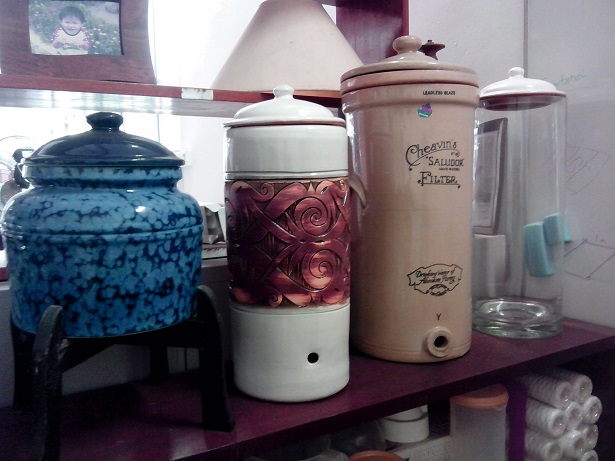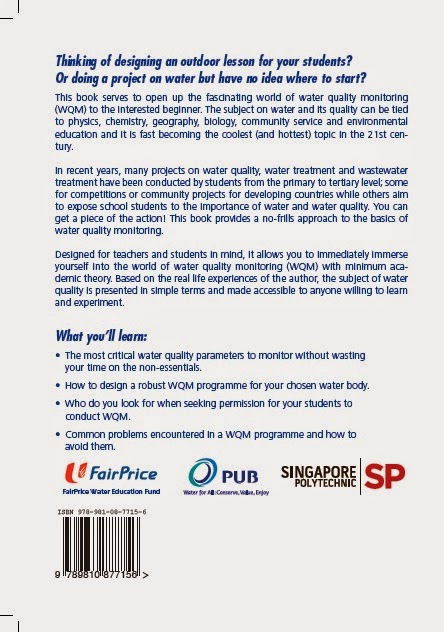Hello Chen Ko
I live near to Sungei Serangoon and have recently started running at and exploring the area around Lorong Halus (it's an awesomely beautiful area with lots of wildlife - and I share your love of nature and I'm also concerned about how successful these new wetlands will be - the undeveloped east bank carries so much more biodiversity than the developed west bank which is Punggol Promenade and HDB flats).
On several trips recently I've been exploring the dirt trails that run along the east bank of Sungei Serangoon, and up and down one tributary just south of Lorong Halus Wetland (it leads up to Lorong Halus near the TPE entrance), and I've been running across what looks like leachate, especially near the green pumping stations:
1. Most commonly orange-ish puddles/mud similar to these:
http://www.soilenvironmentservices.co.uk/images/projects/7_landfill_leachate_metal_contamination.jpg
http://www.wolfenotes.com/2010/06/dep-calls-toxic-landfill-leachate-natural/
2. Oily rainbow sheen on puddles/mud
3. (least common) Black fluid leaching into some puddles
There's no way to avoid these so I've been getting my feet into them, and though I don't really intend to return to those trails in future, I was concerned about how toxic these are, and I was wondering if you have any idea? (I've done some googling and found that (as per your blog as well) the common hazards are heavy metals and toxic organics - PCBs and dioxins?) These areas are not open to the public currently, but there are trails used by foreign workers who fish there (probably from the dorm at Tampines Road near Old Tampines Road).
Here's thanks in advance for any advice you can provide. :-)
Best regards and happy trails!
B
Hello B,
First off, here is a quote for the purpose of Lorong Halus Wetland. "Using an innovative bio-remediation system, national water agency PUB designed the Lorong Halus Wetland to collect and treat water passing through the former landfill, preventing it from flowing into Serangoon Reservoir." (1, 2)
My stance is I would not say that leachate is escaping from the landfill without rock solid proof.
Unfortunately, environmental forensics is often a complicated and expensive activity. Imagine gathering numerous soil, water and solid waste samples from many locations and testing them using sensitive AND expensive equipment in the lab. When the data come out, you still have to interpret them to build up a useful case. One method is to obtain a chemical "fingerprint" of the liquid oozing out of the earth to match that of the solid waste in the landfill. Perhaps the solid waste has a very specific pattern of chemicals (this gives you the "fingerprint") not found anywhere else in the surroundings. If you can positively detect the same patternin your liquid, voila! Then you may have a case.
But we are talking about the environment here. Many physical, chemical and biological processes (both human and natural) are occuring at the same time and these can alter your "nice" pattern of chemicals in unpredictable ways.
Or perhaps you can't find any usable "fingerprint". All is not lost. Another method involves injecting a tracer chemical into your landfill and see if it ends up somewhere else in the surroundings. Obviously, this tracer should not already be in the environment and should be easily detected. A good tracer can be radioactive for ease of detection though it may not be so friendly to the ecology. Some applications have used your familiar salt as a tracer so if your streams suddenly turns salty, you know where it comes from. Same thing here - your ecology may not like such an influx of salt much.
Even if you can afford the time and money, at the end of the day, your tonnes of data may still be inconclusive to prove that leachate is indeed escaping from a landfill. I guess this is quite similar to criminal forensics in which your evidence is based on probabilities e.g. 95% confidence level. What is not to say that the heavy metals and toxic organics in your puddle could have come from the metal processing plant a kilometre away?
In response to your observations:
- "Orange-ish puddles/mud" are often caused by the presence of iron. Iron from soil (especially in Singapore soils) leaches out to the surface and form precipitates (orange solids similar to rust). This process can be facilitated by iron bacteria which "eat" (the chemical term is "oxidise") the iron for energy. Iron bacteria is easily identified by a orange/brown gelatinous slime.
- "Oily rainbow sheen" can indeed be due to oil, especially if there is iridiscence. But it can also be caused by iron/manganese particles from the soil. A simple way to find out is to use a stick to disturb the sheen. If the sheen breaks up into pieces, it is probably iron/manganese. If the sheen swirls around and follows your stick, it is probably oil. Even if it is oil, it can be from natural sources e.g. plants, dead animals.
- "Black fluid leaching into some puddles" can also be from nature. Is your fluid thick and viscous like engine oil? Or is it more like tea - black/brown yet clear? Tea coloured water can simply be tannins from decaying vegetation or humic substances (also originates from vegetation) from soil.
In essence, smoking gun evidence or even probable cause is hard to come by without further investigation and chemical testing. But if you ever find mass or sudden kill of plants or animals in the area, that is certainly a cause for concern though leachate may still not be the culprit.
Figure: Iron bacteria in a stream in Chinese Garden (Apr 2011). It can be a big aesthetic problem.
Figure: Iron bacteria in a small tributary at Ngee Ann Stream (Feb 2008). Even the vegetation were coated brown.
Figure: No, this is not sand. More iron bacteria on the canal bed at Ngee Ann Stream (Feb 2008)
Figure: Oil sheen on canal bed at Ngee Ann Stream (Feb 2008). Notice the iridiscence in the sheen.









